
Johannes Vermeer, van Delft Painting Reproductions 1 of 2
1632-1675
Dutch Baroque Painter
Johannes Vermeer, van Delft, remains an enigmatic figure in the canon of Western art, a painter whose luminous interiors and subtle narratives have captivated viewers for centuries. Born in 1632, Vermeer’s life unfolded entirely within the intimate boundaries of Delft, a city whose character profoundly shaped his art. His father’s dual roles as a silk weaver and art dealer provided Johannes with early exposure to both material luxury and the burgeoning art market. Yet Vermeer’s ascent to mastery was not straightforward, and the details of his artistic training remain tantalizingly elusive. Was he guided by the theatrical Leonard Bramer, the poetic Carel Fabritius, or another, unnamed hand? The absence of records only deepens the intrigue surrounding his development.
By 1653, Vermeer had secured his place within the Saint Luke’s Guild, a formal acknowledgment of his professional status. That same year, his marriage to Catharina Bolnes drew him into Delft’s Catholic enclave, an unexpected pivot for a Protestant-raised artist. This dual identity - steeped in both the practicalities of his Protestant upbringing and the spiritual richness of his adopted Catholicism - subtly informs his work. In his early years, he sought the grandeur of history painting, yet his ambition shifted, embracing the quiet drama of domestic interiors. These scenes, meticulously constructed, reveal a world of restrained emotion and transcendent light.
Vermeer’s oeuvre is strikingly modest in scale - approximately thirty-five paintings are definitively attributed to him - yet within these few works lies an unparalleled mastery of form, texture, and atmosphere. Paintings such as "The Milkmaid" and "Woman Holding a Balance" transform the mundane into the monumental. Vermeer’s genius lies in his ability to render fleeting moments eternal, using light not merely as a tool of illumination but as a medium of meaning. His compositional rigor and use of perspective invite the viewer into spaces at once intimate and idealized, where every object - a pearl earring, a musical instrument, a map - seems imbued with symbolic weight.
Despite his technical brilliance, Vermeer’s career was neither prolific nor lucrative. Economic hardships and the collapse of his art-dealing business marked his later years, and when he died in 1675, he left his family in financial ruin. His near-obscurity endured for centuries, only to be shattered by the fervent advocacy of nineteenth-century critics like Théophile Thoré. Today, Vermeer’s paintings are lauded as quiet revelations, bearing witness to the enduring beauty found within the ordinary. In their precision and poetry, his works continue to resonate, offering viewers a glimpse of timeless serenity in an ever-changing world.
By 1653, Vermeer had secured his place within the Saint Luke’s Guild, a formal acknowledgment of his professional status. That same year, his marriage to Catharina Bolnes drew him into Delft’s Catholic enclave, an unexpected pivot for a Protestant-raised artist. This dual identity - steeped in both the practicalities of his Protestant upbringing and the spiritual richness of his adopted Catholicism - subtly informs his work. In his early years, he sought the grandeur of history painting, yet his ambition shifted, embracing the quiet drama of domestic interiors. These scenes, meticulously constructed, reveal a world of restrained emotion and transcendent light.
Vermeer’s oeuvre is strikingly modest in scale - approximately thirty-five paintings are definitively attributed to him - yet within these few works lies an unparalleled mastery of form, texture, and atmosphere. Paintings such as "The Milkmaid" and "Woman Holding a Balance" transform the mundane into the monumental. Vermeer’s genius lies in his ability to render fleeting moments eternal, using light not merely as a tool of illumination but as a medium of meaning. His compositional rigor and use of perspective invite the viewer into spaces at once intimate and idealized, where every object - a pearl earring, a musical instrument, a map - seems imbued with symbolic weight.
Despite his technical brilliance, Vermeer’s career was neither prolific nor lucrative. Economic hardships and the collapse of his art-dealing business marked his later years, and when he died in 1675, he left his family in financial ruin. His near-obscurity endured for centuries, only to be shattered by the fervent advocacy of nineteenth-century critics like Théophile Thoré. Today, Vermeer’s paintings are lauded as quiet revelations, bearing witness to the enduring beauty found within the ordinary. In their precision and poetry, his works continue to resonate, offering viewers a glimpse of timeless serenity in an ever-changing world.
38 Vermeer Paintings
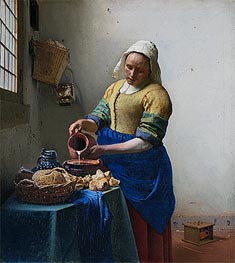
The Milkmaid (The Kitchen Maid) c.1658/60
Oil Painting
$2256
$2256
Canvas Print
$62.11
$62.11
SKU: VVD-1067
Johannes Vermeer, van Delft
Original Size: 45.5 x 41 cm
Rijksmuseum, Amsterdam, Netherlands
Johannes Vermeer, van Delft
Original Size: 45.5 x 41 cm
Rijksmuseum, Amsterdam, Netherlands
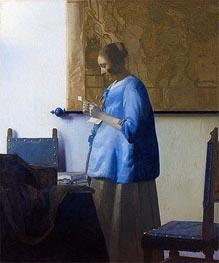
Woman Reading a Letter c.1663/64
Oil Painting
$2230
$2230
Canvas Print
$62.11
$62.11
SKU: VVD-1068
Johannes Vermeer, van Delft
Original Size: 46.5 x 39 cm
Rijksmuseum, Amsterdam, Netherlands
Johannes Vermeer, van Delft
Original Size: 46.5 x 39 cm
Rijksmuseum, Amsterdam, Netherlands
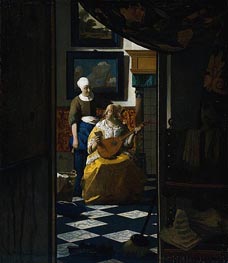
The Love Letter c.1669/70
Oil Painting
$2380
$2380
Canvas Print
$62.11
$62.11
SKU: VVD-1069
Johannes Vermeer, van Delft
Original Size: 44 x 38.5 cm
Rijksmuseum, Amsterdam, Netherlands
Johannes Vermeer, van Delft
Original Size: 44 x 38.5 cm
Rijksmuseum, Amsterdam, Netherlands
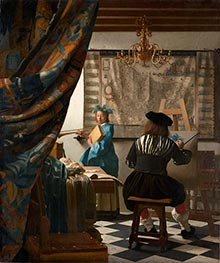
The Art of Painting (The Artist's Studio) c.1666/67
Oil Painting
$9439
$9439
Canvas Print
$78.73
$78.73
SKU: VVD-1070
Johannes Vermeer, van Delft
Original Size: 120 x 100 cm
Kunsthistorisches Museum, Vienna, Austria
Johannes Vermeer, van Delft
Original Size: 120 x 100 cm
Kunsthistorisches Museum, Vienna, Austria
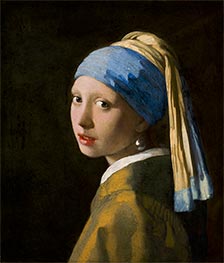
The Girl with a Pearl Earring c.1665/66
Oil Painting
$835
$835
Canvas Print
$62.11
$62.11
SKU: VVD-1071
Johannes Vermeer, van Delft
Original Size: 46.5 x 40 cm
Mauritshuis Royal Picture Gallery, The Hague, Netherlands
Johannes Vermeer, van Delft
Original Size: 46.5 x 40 cm
Mauritshuis Royal Picture Gallery, The Hague, Netherlands
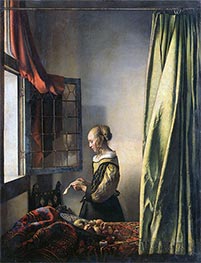
Girl Reading a Letter at an Open Window c.1657/59
Oil Painting
$2722
$2722
Canvas Print
$71.88
$71.88
SKU: VVD-1072
Johannes Vermeer, van Delft
Original Size: 83 x 64.5 cm
Gemaldegalerie Alte Meister, Dresden, Germany
Johannes Vermeer, van Delft
Original Size: 83 x 64.5 cm
Gemaldegalerie Alte Meister, Dresden, Germany
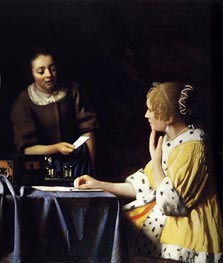
Mistress and Maid c.1666/67
Oil Painting
$2762
$2762
Canvas Print
$79.59
$79.59
SKU: VVD-1073
Johannes Vermeer, van Delft
Original Size: 90.2 x 78.7 cm
Frick Collection, New York, USA
Johannes Vermeer, van Delft
Original Size: 90.2 x 78.7 cm
Frick Collection, New York, USA
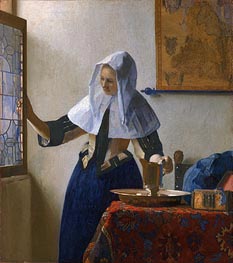
Young Woman with a Water Pitcher c.1664/65
Oil Painting
$1849
$1849
Canvas Print
$62.11
$62.11
SKU: VVD-1074
Johannes Vermeer, van Delft
Original Size: 45.7 x 40.6 cm
Metropolitan Museum of Art, New York, USA
Johannes Vermeer, van Delft
Original Size: 45.7 x 40.6 cm
Metropolitan Museum of Art, New York, USA
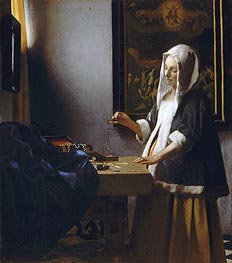
Woman Holding a Balance c.1664
Oil Painting
$1780
$1780
Canvas Print
$62.11
$62.11
SKU: VVD-1075
Johannes Vermeer, van Delft
Original Size: 42.5 x 38 cm
National Gallery of Art, Washington, USA
Johannes Vermeer, van Delft
Original Size: 42.5 x 38 cm
National Gallery of Art, Washington, USA

Woman with a Lute near a Window c.1664
Oil Painting
$1908
$1908
Canvas Print
$73.09
$73.09
SKU: VVD-1076
Johannes Vermeer, van Delft
Original Size: 51.4 x 45.7 cm
Metropolitan Museum of Art, New York, USA
Johannes Vermeer, van Delft
Original Size: 51.4 x 45.7 cm
Metropolitan Museum of Art, New York, USA

Girl with a Red Hat c.1665/66
Oil Painting
$804
$804
Canvas Print
$62.11
$62.11
SKU: VVD-1077
Johannes Vermeer, van Delft
Original Size: 22.8 x 18 cm
National Gallery of Art, Washington, USA
Johannes Vermeer, van Delft
Original Size: 22.8 x 18 cm
National Gallery of Art, Washington, USA
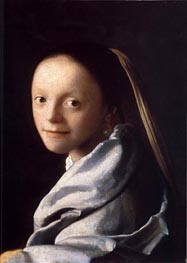
Portrait of a Young Woman c.1667/68
Oil Painting
$718
$718
Canvas Print
$62.11
$62.11
SKU: VVD-1078
Johannes Vermeer, van Delft
Original Size: 44.5 x 40 cm
Metropolitan Museum of Art, New York, USA
Johannes Vermeer, van Delft
Original Size: 44.5 x 40 cm
Metropolitan Museum of Art, New York, USA
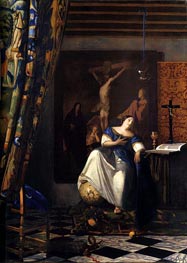
Allegory of Faith c.1671/74
Oil Painting
$2818
$2818
Canvas Print
$89.97
$89.97
SKU: VVD-1079
Johannes Vermeer, van Delft
Original Size: 114.3 x 88.9 cm
Metropolitan Museum of Art, New York, USA
Johannes Vermeer, van Delft
Original Size: 114.3 x 88.9 cm
Metropolitan Museum of Art, New York, USA
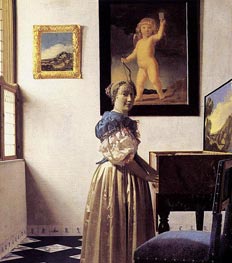
Young Woman Standing at a Virginal c.1672/73
Oil Painting
$2001
$2001
Canvas Print
$72.71
$72.71
SKU: VVD-1080
Johannes Vermeer, van Delft
Original Size: 51.7 x 45.2 cm
National Gallery, London, UK
Johannes Vermeer, van Delft
Original Size: 51.7 x 45.2 cm
National Gallery, London, UK
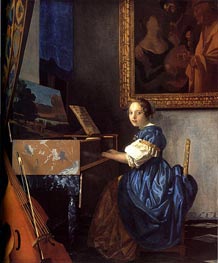
Lady Seated at a Virginal c.1673/75
Oil Painting
$2083
$2083
Canvas Print
$72.91
$72.91
SKU: VVD-1081
Johannes Vermeer, van Delft
Original Size: 51.5 x 45.5 cm
National Gallery, London, UK
Johannes Vermeer, van Delft
Original Size: 51.5 x 45.5 cm
National Gallery, London, UK

The Guitar Player c.1670
Oil Painting
$2001
$2001
Canvas Print
$76.36
$76.36
SKU: VVD-1082
Johannes Vermeer, van Delft
Original Size: 53 x 46.3 cm
Kenwood House (The Iveagh Bequest), London, UK
Johannes Vermeer, van Delft
Original Size: 53 x 46.3 cm
Kenwood House (The Iveagh Bequest), London, UK
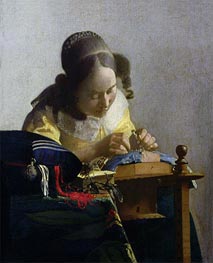
The Lacemaker c.1669/70
Oil Painting
$942
$942
Canvas Print
$62.11
$62.11
SKU: VVD-1083
Johannes Vermeer, van Delft
Original Size: 24.5 x 21 cm
Louvre Museum, Paris, France
Johannes Vermeer, van Delft
Original Size: 24.5 x 21 cm
Louvre Museum, Paris, France
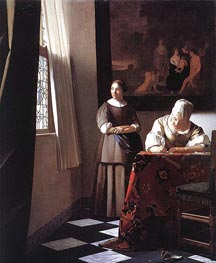
Lady Writing a Letter with Her Maid c.1670
Oil Painting
$2558
$2558
Canvas Print
$95.10
$95.10
SKU: VVD-1084
Johannes Vermeer, van Delft
Original Size: 71.1 x 58.4 cm
National Gallery, Dublin, Ireland
Johannes Vermeer, van Delft
Original Size: 71.1 x 58.4 cm
National Gallery, Dublin, Ireland

The Geographer c.1668/69
Oil Painting
$2001
$2001
Canvas Print
$76.85
$76.85
SKU: VVD-1085
Johannes Vermeer, van Delft
Original Size: 53 x 46.6 cm
Stadel Museum, Frankfurt, Germany
Johannes Vermeer, van Delft
Original Size: 53 x 46.6 cm
Stadel Museum, Frankfurt, Germany
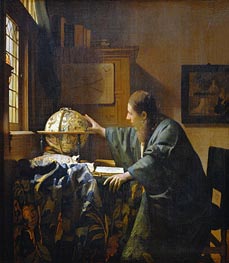
The Astronomer 1668
Oil Painting
$1978
$1978
Canvas Print
$70.01
$70.01
SKU: VVD-1086
Johannes Vermeer, van Delft
Original Size: 50 x 45 cm
Louvre Museum, Paris, France
Johannes Vermeer, van Delft
Original Size: 50 x 45 cm
Louvre Museum, Paris, France
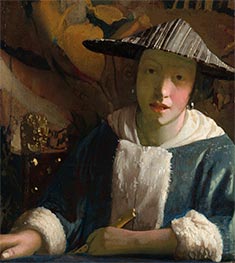
Young Girl with a Flute c.1665/75
Oil Painting
$1096
$1096
Canvas Print
$62.11
$62.11
SKU: VVD-1087
Johannes Vermeer, van Delft
Original Size: 20 x 17.8 cm
National Gallery of Art, Washington, USA
Johannes Vermeer, van Delft
Original Size: 20 x 17.8 cm
National Gallery of Art, Washington, USA
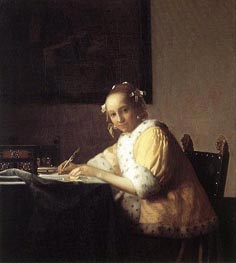
A Lady Writing a Letter c.1665/66
Oil Painting
$1723
$1723
Canvas Print
$62.11
$62.11
SKU: VVD-1088
Johannes Vermeer, van Delft
Original Size: 45 x 39.9 cm
National Gallery of Art, Washington, USA
Johannes Vermeer, van Delft
Original Size: 45 x 39.9 cm
National Gallery of Art, Washington, USA
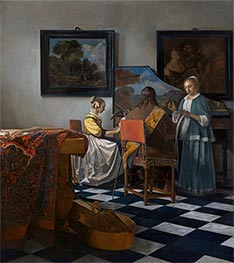
The Concert c.1665/66
Oil Painting
$2935
$2935
Canvas Print
$83.69
$83.69
SKU: VVD-1089
Johannes Vermeer, van Delft
Original Size: 72.5 x 64.7 cm
Isabella Stewart Gardner Museum, Boston, USA
Johannes Vermeer, van Delft
Original Size: 72.5 x 64.7 cm
Isabella Stewart Gardner Museum, Boston, USA
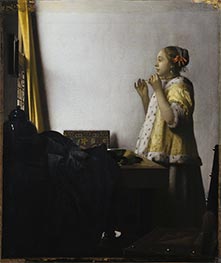
Woman with a Pearl Necklace c.1663/65
Oil Painting
$1693
$1693
Canvas Print
$79.07
$79.07
SKU: VVD-1090
Johannes Vermeer, van Delft
Original Size: 56.1 x 47.4 cm
Gemaldegalerie, Berlin, Germany
Johannes Vermeer, van Delft
Original Size: 56.1 x 47.4 cm
Gemaldegalerie, Berlin, Germany